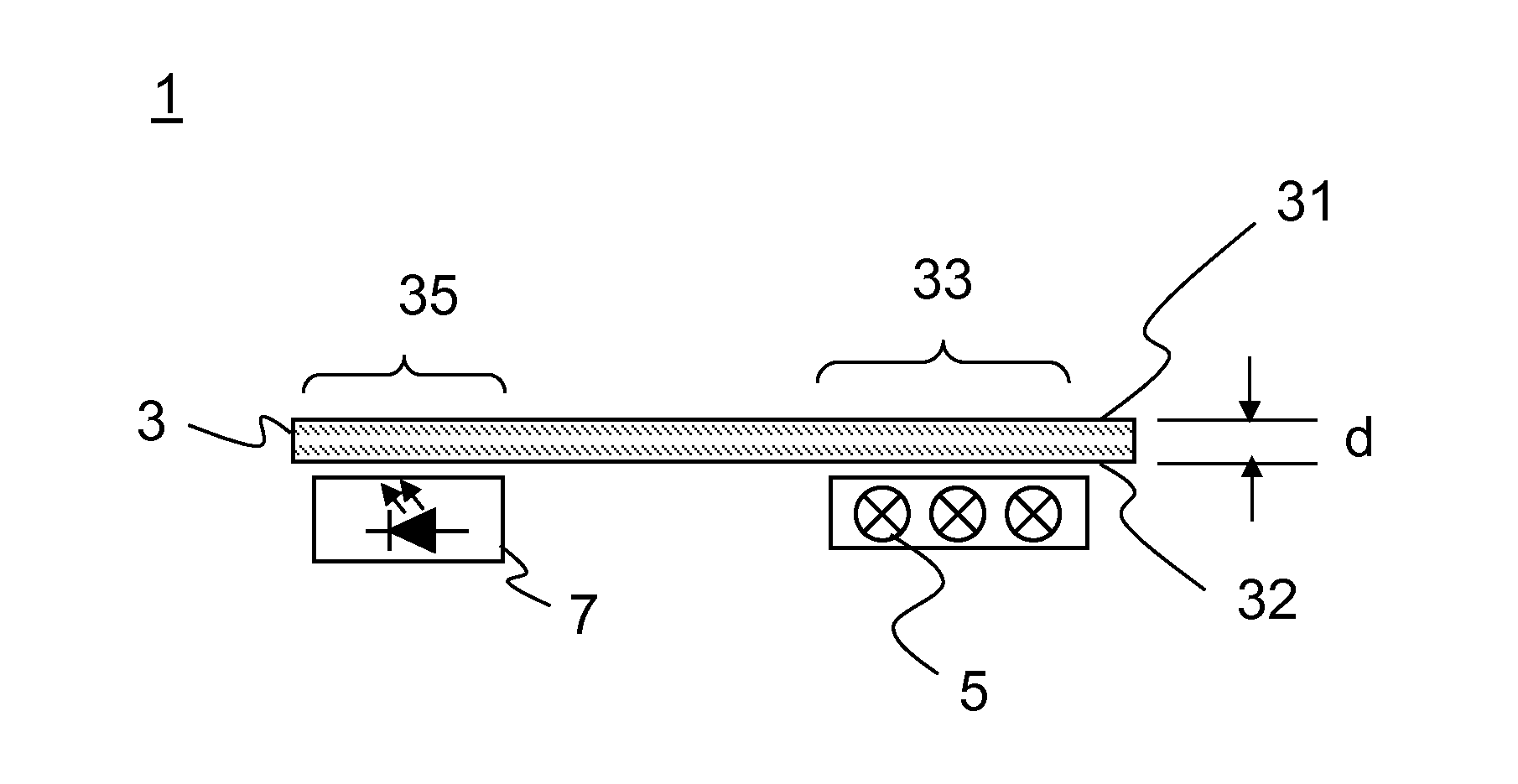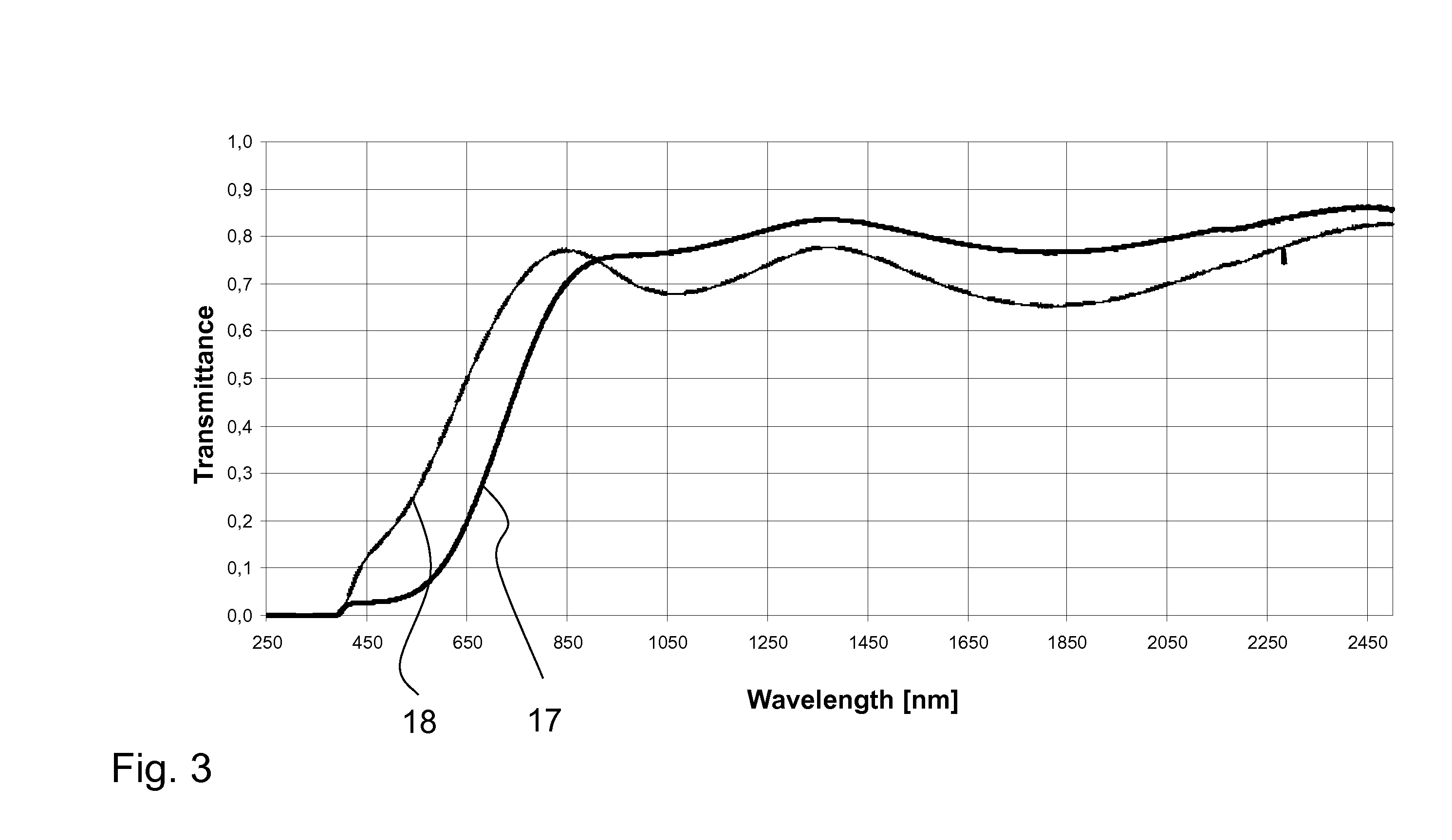Method for producing a glass ceramic with a predefined transmittance
- Summary
- Abstract
- Description
- Claims
- Application Information
AI Technical Summary
Benefits of technology
Problems solved by technology
Method used
Image
Examples
Embodiment Construction
[0044]The method of the invention is particularly suitable for glass ceramic cooktops. In this case the glass ceramic according to the invention exhibits a transmittance such that a very good visibility and color reproduction for self-luminous display elements is achieved. FIG. 1 shows a schematic side view of an exemplary embodiment of a glass ceramic cooktop 1 that comprises a glass ceramic plate 3 according to the invention. Glass ceramic plate 3 has an upper surface 31 and a lower surface 32. Heating elements 5 are arranged below lower surface 32 for heating cookware positioned oppositely on the upper surface 31 in a cooking zone 33, or optionally for directly heating food to be boiled or cooked. Glass ceramic plate 3 has a thickness d, typically in a range from 2 to 6 millimeters.
[0045]Generally, without being limited to the illustrated example, at least one self-luminous display element 7 may additionally be arranged below the glass ceramic plate 3, which shines through the gl...
PUM
| Property | Measurement | Unit |
|---|---|---|
| Fraction | aaaaa | aaaaa |
| Fraction | aaaaa | aaaaa |
| Nanoscale particle size | aaaaa | aaaaa |
Abstract
Description
Claims
Application Information
 Login to View More
Login to View More - R&D
- Intellectual Property
- Life Sciences
- Materials
- Tech Scout
- Unparalleled Data Quality
- Higher Quality Content
- 60% Fewer Hallucinations
Browse by: Latest US Patents, China's latest patents, Technical Efficacy Thesaurus, Application Domain, Technology Topic, Popular Technical Reports.
© 2025 PatSnap. All rights reserved.Legal|Privacy policy|Modern Slavery Act Transparency Statement|Sitemap|About US| Contact US: help@patsnap.com



